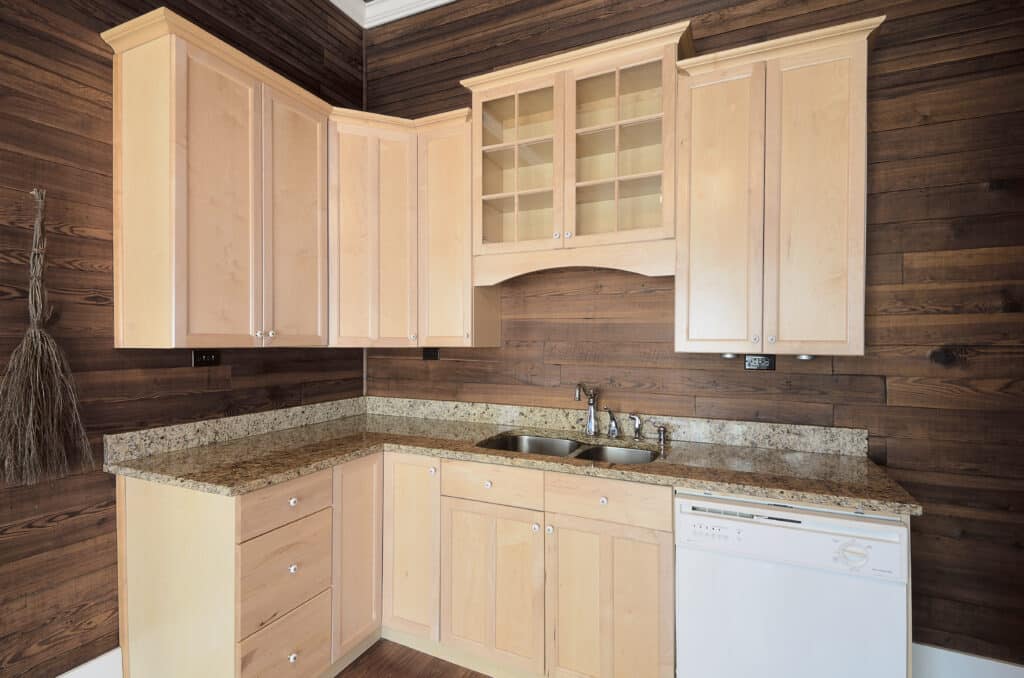We tend to think of wood paneling as a dated design trend that immediately places your home decades into the past. But that doesn’t have to be the case! There are ways to make even the most old-fashioned design elements work in a modern home, and that includes wood paneling. At NH Woodworks, we’ve incorporated wood paneling into multiple kitchen remodeling projects, and we think they all look pretty good, if we do say so ourselves.
But before you start any kitchen remodeling project, you need to know your options. Let’s look at the different types of wood paneling first.
Modern Wood Paneling Styles
- Raised or flat panel: This is the traditional style that you’ll see in early colonial homes, usually covering the lower half of the wall. This type of paneling uses rails and stiles or horizontal and vertical frame pieces with grooved or rabbeted edges.
- Board and batten: Usually associated with a more rustic style, this type of paneling is becoming more popular in modern homes. Wide boards are attached to the wall vertically, and thinner boards cover the seams to hide gaps and uneven areas.
- Tongue and groove: This name describes how the panel boards fit together rather than what they look like. The boards slot together, one with a tongue and the other with a groove. This creates the illusion of one continuous panel along the wall. Most often, these panels are flat on one side and have a beaded shallow-grooved profile on the other side.
- Shiplap: Modern farmhouse design has made shiplap paneling popular. Boards with rabbeted edges overlap each other, either horizontally or vertically. It creates a clean yet rustic look that many people like.
- Pallet and reclaimed wood: Not so much a paneling style as a design trend, people are opting to incorporate wood from pallets and other reclaimed wood into their paneling.

Common Way to Use Modern Wood Paneling
- Accent wall: Give your kitchen a design flair by using wood paneling in just one area to make an accent wall.
- Floor to ceiling: If you like it, commit to it! Rather than limiting the wood paneling to a certain height, put it all the way up to the ceiling to make a bold statement.
- Wainscoting: The classic choice. Run wood paneling along the bottom of your walls at whatever height fits the look of your home.
